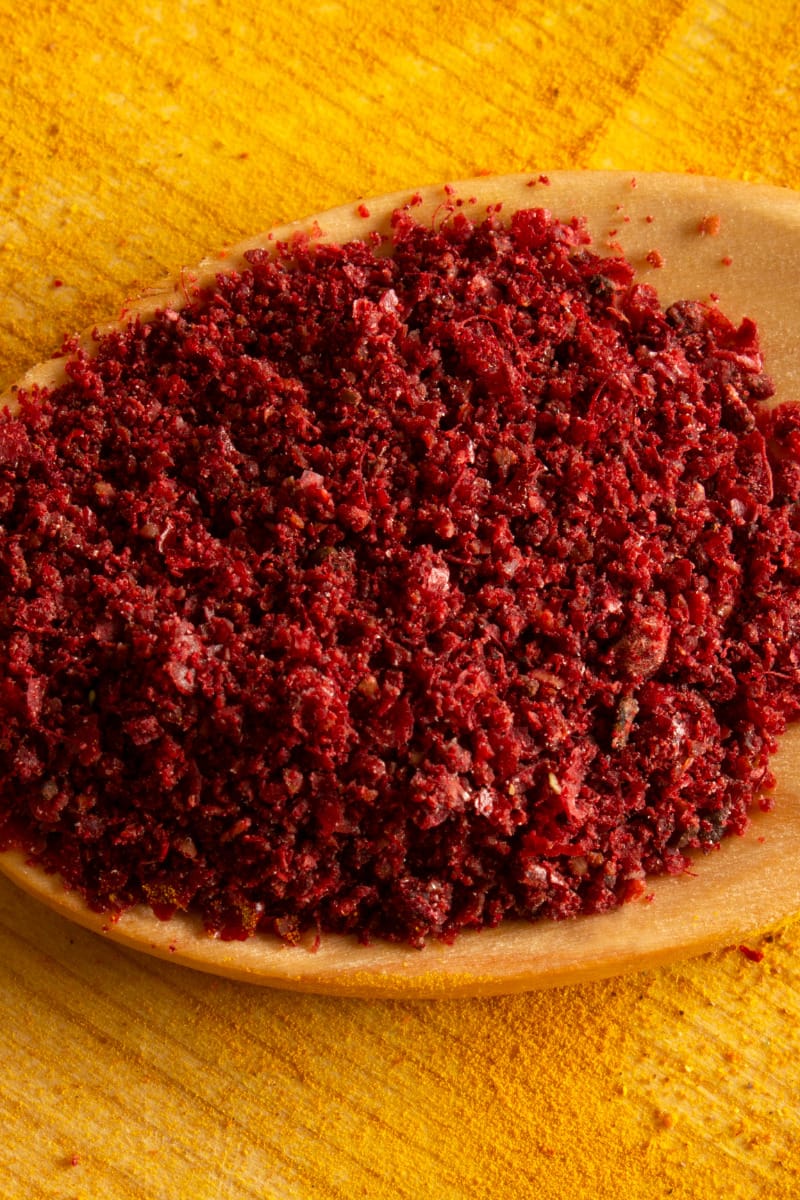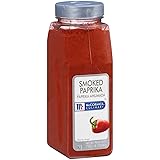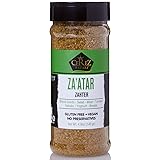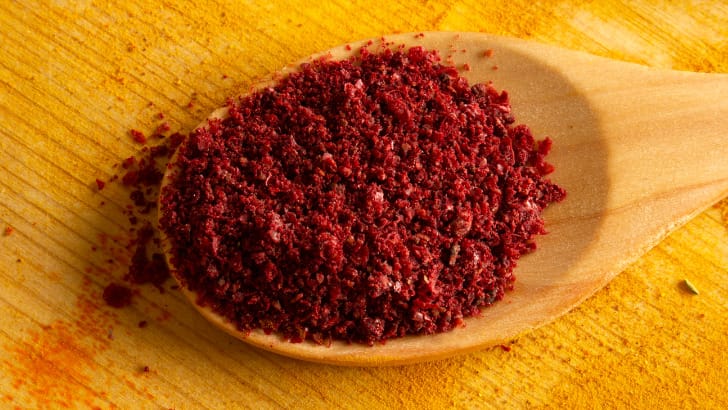Sumac is a Middle Eastern spice that dates as far back as before the Roman Empire. It has antiseptic qualities that were first documented thousands of years ago in manuscripts and medicinal texts found in Greece. It’s a versatile spice used globally to lift and compliment the flavor and color of various dishes, from meat and fish barbecues to fresh vegetables, desserts, and kebabs.
Ground sumac made from the dried flesh and skin of sumac tree berries found in its flowers. It’s a very recognizable spice, if not the most conspicuous of the Middle East, with a deep red hue and signature citrusy flavor. The sumac tree is closely related to the cashew tree, so people with cashew allergies should probably avoid it.

Ground sumac is highly sought after, primarily by people looking to add color and a citrus flavor to recipes. And it’s also applied to a wide array of cooking processes, such as:
As a spice blend: Sumac is used as part of other spices and is a standard ingredient in za’atar. This Mediterranean spice blend is regularly used as a topping.
As a dry seasoning: Sprinkle ground sumac over meats, salads, bread, desserts, and various other dishes. In its dry form, it still adds a citrus flavor and a colorful finish.
As a substitute for acidic condiments: Vinegar and lemon juice can be replaced with ground sumac in many recipes that call for them. Sumac has a less intense flavor vs. vinegar or lemon.
In spice rubs and marinades: Combine any blend of spices and aromatics with ground sumac to create a potent marinade or spice rub for meats and fish. It enhances the natural fats of such dishes with its bright flavor.
As a flavor pairing: Add ground sumac alongside other food items to combine their flavors. Some of these combinations include:
- Vegetables such as cauliflower
- Fruits like avocado
- Tomato/tomato sauce
- Greek yogurt
- Chicken
- Fish
- Eggs
The best substitutes for ground sumac
Whether you’re looking to replicate sumac’s citrus flavor or it’s deep red color, there are other ingredients that can do the job in a pinch. Here are the 6 best substitutes for ground sumac.
1. Lemon juice
- 100% LEMON JUICE: Iberia 100% lemon juice makes it easy to add delicious lemon flavor to dipping sauces, marinades, or even sodas or juice without slicing and squeezing fresh lemons.
- NO SLICING AND SQUEEZING: No need to slice or squeeze whole lemons any more, just add a splash of Iberia lemon juice to your drinks and dishes.
- SMOOTH TANGY TASTE: Iberia lemon juice has a sour and fluid consistency with a tangy flavor that blends well into a variety of dishes and drinks.
- VERSATILE: Stir Iberia lemon juice to create delicious and fresh tasting salad dressings or use it to make a classic lemon meringue pie. Add a splash of Iberia 100% lemon juice to lemon drop martini, lemonade or iced tea and avoid all the mess-work.
- A PANTRY STAPLE: Bulk supply of 3 x 32 oz bottles to keep your kitchen in good supply all the time.
Lemon juice doesn’t have ground sumac’s pretty color. But what it lacks in hue, it makes up for in taste. Lemon mimics sumac’s flavor (or maybe it’s the other way around).
Since lemon is more acidic and tangier than sumac, substitute conservatively. Start with a smaller amount and add more to taste.
2. Lemon pepper seasoning
- Zesty, sharp flavor of salt, black pepper, onion, garlic and lemon oil
- Packaged in the USA
- Fresh flavor guarantee
- Usage tip: Use it to add satisfying seasoning to seafood like tilapia or shrimp, salads or meat
- FUN FACT: A kitchen staple, you can count on superior taste that friends and family will love
Lemon pepper is also a nice substitute for sumac, both in flavor and convenience. Lemon pepper seasoning is one ingredient you can find anywhere around you or even make yourself. The spice blend consists of dried lemon zest and cracked black pepper, and the components’ flavors perfectly complement each other.
You can use equal amounts of lemon pepper seasoning in place of ground sumac, as the lemon flavor isn’t overwhelming. But you may note a slight hint of spiciness in the dish, which isn’t so bad.
3. Smoked paprika
- RICH FLAVOR: McCormick Culinary Smoked Paprika is a professional-grade, finely ground paprika with a sweet yet smoky flavor and a deep red color; widely used in Spanish cuisine, this paprika inspires menus and adds rich flavor to many dishes
- PREMIUM QUALITY: The peppers used to create McCormick Culinary Smoked Paprika are carefully sourced from a safe and secure global supply chain to ensure you receive a premium quality spice that delivers consistent, pure flavor in every bottle
- READY TO USE: Tailored to the needs of culinary professionals, McCormick Culinary Smoked Paprika comes ready to use with no preparation necessary; use as much or as little paprika as you need with the lid’s convenient shaker and spoon dispensing options
- BUY IN BULK: McCormick Culinary Smoked Paprika comes in large 17-ounce containers perfect for restaurant use and bulk buying; when you buy spices in bulk, you can save money and keep your pantry stocked
- VERSATILE: This smoked paprika powder adds vibrant color and powerful, smoky flavor to a wide variety of dishes; consider using McCormick Culinary Smoked Paprika when cooking chicken, fish, pork, potatoes and rice
Paprika has the same red color as ground sumac. So if you’re looking for a substitute that replicates the visual effect of sumac, paprika is your choice.
Since paprika doesn’t have sumac’s tangy flavor, you might combine with another substitute like lemon pepper to get the right taste, along with that pretty red color.
4. Za’atar
- SAVORY and HERBY: Za’atar seasoning has a herby, savory, earthy flavor with that hint of bitter lemony sumac and it’s a unique spice seasoning to experiment within the kitchen.
- VEGAN and KETO-FRIENDLY: Zaatar seasoning is great for vegan and paleo diets. Clean eating doesn’t mean meals have to be tasteless and boring. Add Za’atar seasoning to all your dishes and warm every bite.
- UNIQE TASTE: Zaatar spice blend is consist of 5 unique spices which can be mixed differently in Middle eastern culture. Cerez Pazari combines the freshest spices to give you the most memorible authentic zatar taste.
- COMMON USES: A Middle eastern spice mix, Zatar spice blend is the best seasoning spice for adding flavor to vegetables, flatbreads, hummus, chicken, and meat. Zaatar seasoning is an aromatic mixture of traditional spices which is dipped in olive oil as a quick appetizer.
- PREMIUM QUALITY: Za atar is prepared by our spice experts. They select the freshest spices with care and mix them balanced to make you feel in the streets of Middle east.
Za’atar works as a solid substitute for sumac in many recipes, and for an obvious reason: Za’atar contains ground sumac. And though it also contains a blend of other spices, sumac is its most prominent flavor.
Depending on the brand you choose, Za’atar may also include other spices like garlic, sesame seeds, and thyme. So you know what you’re getting into, read the label before you use Za’atar. You might need to add or remove other seasonings in your recipe to balance the flavors.
To use Za’atar as a substitute for sumac, start with the same amount as called for in the recipe, then work your way up to taste.
5. Tamarind
- Your Trusted Family-Owned Small Business since 1889
- Can be used in Indian, Thai and African cuisine; Sour and tart flavored
- Perfect for chutney, curry, stir fry, noodles and salsa. Adds zest and brightness to your cooking
- Made from concentrated fruit of the tamarind tree. No sugar / syrup added, No preservatives
- USDA Certified; Organic; Gluten-free. Packed in Glass; Texture may vary (pourable vs thick) from batch-to-batch.
Tamarind paste is commonly used in Indian and Thai cuisine and passes comfortably as an alternative to sumac.
Tamarind is renowned for its blend of sour, salty, and slightly sweet tastes, and may come as a paste, dried pods, or frozen. The paste is the easiest to use and works well in lots of recipes that call for sumac.
Since tamarind is potent in flavor, use discretion when adding it to recipes. It’s best to start with a small amount and then work your way up until you reach the desired level of tang or sourness.
6. Red wine vinegar
- One 16 fluid ounce bottle of Red Wine Vinegar
- Some of your favorite Happy Belly products are now part of the Amazon Grocery brand! Although packaging may vary during the transition, the ingredients and product remain the same. Thank you for your continued trust in our brands
- 5% acidity
- No artificial colors or flavors
- Amazon Grocery has all the favorites you love for less. You’ll find everything you need for great-tasting meals in one shopping trip.
Vinegar is highly recognized for its acidic nature and sour taste, making it a great substitute for sumac in soups, sauces, marinades, meat recipes, and even salad dressings.
Since red wine vinegar can be tangier and stronger flavored than sumac, start with a conservative measurement and adjust to taste.
Sumac in recipes
The culinary applications of Sumac date as far back as the Roman Empire. Before then, it’s also been mentioned in Greek medicinal texts, where its antiseptic properties were highly revered. Though today, the versatile spice is still used for its numerous health benefits, Sumac is also widely included in many recipes worldwide. It’s even one of the signature ingredients in Turkish, Arabic, and Levantine dishes and is also applied to foods native to Asia.
Sumac is primarily used for its acidity, making it an exotic option in cases where lemons are absent. Its tangy taste and bright red color is also a welcome addition to recipes such as:
- Lamb chops
- Pita
- Salads
- Sauces
- Bread
- Ghanoush
- Desserts
- Garnishes
- Meat recipes
- Baked fries
- Marinades
- Dry rubs
- Spice mixes
- Grilled dishes
- Kebabs
- Ganache
Sumac FAQs
Where can the sumac tree be found?
The sumac tree or sumac plant is a wild Bush that is primarily found in the Mediterranean region. From Italy to Greece and Lebanon. It’s mainly used in the Middle East, Turkey, and Iran, but the sumac flower primarily grows in subtropical and temperate regions of Africa and North America.
What are the other names for sumac?
It’s also known as Elm leaves sumac, Sicilian sumac, sumach, and sumac.
What are the forms of sumac we have?
You can get sumac ground or as a whole. As a whole, it’s a deep red berry found in the sumac flower. They can also be found in ground form in grocery stores or at the market as powder sumac.
Is Sumac anti-inflammatory?
Sumac is rich in antioxidants, renowned for protecting the body cells from oxidative stress and damages. This makes them great for preventing inflammatory diseases such as heart disease.
Is Sumac similar to turmeric?
No, it isn’t. While turmeric has a bitter flavor that’s slightly pungent, sumac is more lemony and tangy.
How long should Sumac tea steep?
If you’re making sumac tea, it’s best to let it steep for about 5 to 10 minutes. The longer it steep, the more concentrated the sumac tea becomes. But once the allotted time is reached, strain or filter the liquid out. Leaving sumac in hot or boiling water for too long isn’t advisable due to its tannic acid content.
What does sumac taste like?
Sumac has a citrus flavor. See our post: What does sumac taste like for a more detailed description.
Conclusion
Ground sumac has a flavor profile similar to lemon, but its fruitiness balances the acidity. And these great features can make it an arduous task to replace them in any recipe. Many alternatives to sumac only substitute for one or a few of its features, but it still shouldn’t stop you from having a lovely dish. So, we’ve brought you these great alternatives to this big game player in the world of Mediterranean spices. And if you know what you’re doing, you’ll still get your lip-smacking recipe without any worries.
Last update on 2025-12-07 / Affiliate links / Images from Amazon Product Advertising API






